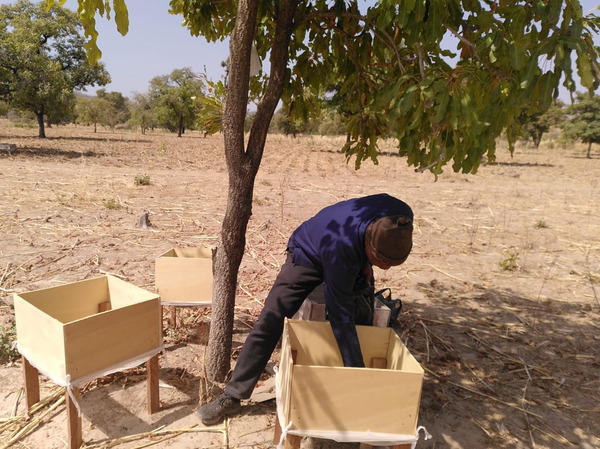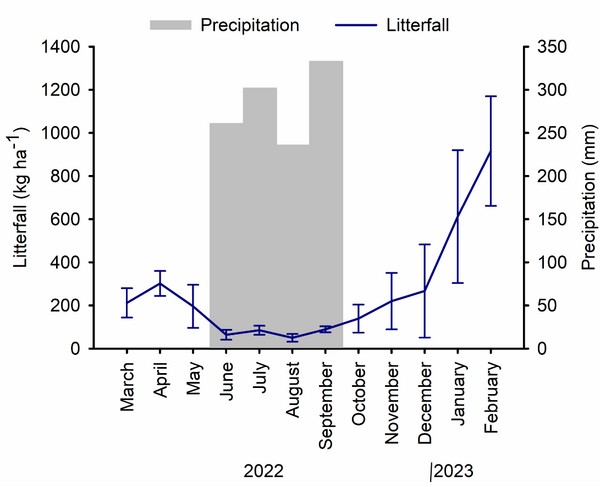Introduction
In tree-based agroecosystems litterfall is very important in nutrient cycling because it precedes litter decomposition which leads to release of nutrients into the soil. As a result, soil under the canopy of trees such as Vitellaria paradoxa Gaertn. C. F. have high soil fertility than open areas without tree cover (Diallo et al., 2021). This internal nutrient cycling processes are important especially in the Sahelian Region of West Africa where farmers are not able to utilize fertilizer because of low investment capacity. Understanding the litterfall dynamics of V. paradoxa will broaden our knowledge on ways to effectively manage soil fertility in V. paradoxa dominated parkland systems.
Materials and Methods
This study by Siriki Fane in WP6 was conducted in Mafeya and Tiètiguila in the Koulikoro Region of Mali using 25 m2 wooden litter boxes raised 50 cm above ground (Fig. 1). In each village three V. paradoxa were selected with four litter boxes place under each tree canopy. Litterfall in litter boxes were collected fortnightly and summed for each month for one year.
Results and Discussion
Annual litterfall from V. paradoxa was 362 kg ha-1 yr-1, with highest litterfall in February which was 14-folds higher than in June which had the lowest (Fig. 2). High litterfall coincided with the periods of no rain. High litterfall during the dry season has been reported by several authors (e.g. Becker et al., 2015; Saj et al., 2021) and this is due to trees adaptation to reduce transpiration in periods of moisture stress (Yang et al., 2003).
Conclusion
We conclude that litterfall in V. paradoxa is highly controlled by climate with highest litterfall occurring during dry periods.
Written by: Deogratias Kofi Agbotui, Scientific Assistant, University of Kassel (Organic Plant Production and Agroecosystems Research in the Tropics and Subtropics)
Further information
Cited literature
Becker, J., Pabst, H., Mnyonga, J., & Kuzyakov, Y. (2015). Annual litterfall dynamics and nutrient deposition depending on elevation and land use at Mt. Kilimanjaro. Biogeosciences, 12(19), 5635–5646. https://doi.org/10.5194/bg-12-5635-2015
Diallo, M. B., Akponikpè, P. B. I., Abasse, T., Fatondji, D., & Agbossou, E. K. (2021). Combined effect of trees and soil fertility management practices on millet yields in the Sahel. Agroforestry Systems, 95(4), 717–730. https://doi.org/10.1007/s10457-021-00624-8
Saj, S., Nijmeijer, A., Nieboukaho, J. E., & Harmand, P. L. J.-M. (2021). Litterfall seasonal dynamics and leaf-litter turnover in cocoa agroforests established on past forest lands or savannah. Agroforestry Systems, 95, 583–597. https://doi.org/10.1007/s10457-021-00602-0
Yang, Y., Guo, G., Chen, G., He, Z., & Xie, J. (2003). Effect of slash burning on nutrient removing and soil fertility in Chinese Fir and evergreen broadleaved forests of mid-subtropical China. Pedosphere, 13(1), 87–96.




 tap and then scroll down to the Add to Home Screen command.
tap and then scroll down to the Add to Home Screen command.